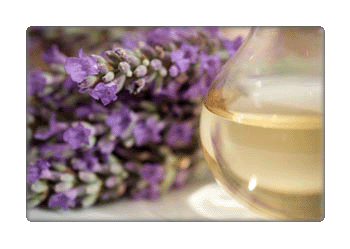FAQ
I am so confused about ingredients in products. How do I know what is harmful and what isn’t?
Is there anything that will help me read and understand product labels?
Why are there so many toxic substances in our products? I thought the FDA was protecting us?
How can a product be advertised as being natural when it includes petrochemical ingredients?
How does a product stay fresh if it doesn’t have paraben or some other chemical preservative?
What does organic mean in the industry?
Will these healthy and pure products help me with my allergies?
What about sunscreen? Is there a healthy one available?
I am so confused about ingredients in products. How do I know what is harmful and what isn't?
One almost needs a chemistry degree to understand what the labels are telling us. Some awful-sounding chemical names are actually technical terms for very helpful natural ingredients.
For example, glycyrrhizen is a derivative of licorice root, which is added to some products for its anti-inflammatory and anti-allergenic properties. Unlike synthesized hydrocortisone, it does not have side effects. Caprylic acid occurs naturally as a component of cow and goat milk and also palm and coconut oils. It gives lotions and creams slip and glide and is a healthy substitute for synthetic ingredients like dimethicone and certain PEG compounds.
We would like to make label reading easier. Click here for easy-to-read chart of harmful ingredients.
(To read PDF format, you need Adobe Acrobat Reader.)
Is there anything that will help me read and understand product labels?
A Consumer’s Dictionary of Cosmetic Ingredients by Ruth Winters will help you read labels. Bear in mind, however, that many chemicals in this guide are listed as nontoxic in small amounts. We don’t believe that to be true, as many small amounts add up to a large amount accumulating over time. Other chemicals are also listed as nontoxic, however, it has been proven that they can affect the body adversely. Petrochemicals influencing on a molecular level can mimic hormones and disrupt our normal body functioning. Synthesized ingredients are also known to lack certain micro-constituents. Being incomplete, they do not act the same way in our bodies as an ingredient with all its natural constituents intact. The beneficial effects of other, more healthful and natural ingredients in the product can also be sabotaged.
Why are there so many toxic substances in our products? I thought the FDA was protecting us?
Unfortunately, the FDA does little to regulate or control the cosmetic industry, which is left to formulate products however it wishes. Usually they are formulated for the benefit of business, not for our health and well-being. Ingredients are often chosen to increase shelf life and generate greater profit margins. In fact the FDA really  doesn’t get involved unless there is a consumer complaint and evidence of some harm. This means that we, the public, are the test animals for the cosmetic industry. In this sense, no product today is free of animal-testing.
doesn’t get involved unless there is a consumer complaint and evidence of some harm. This means that we, the public, are the test animals for the cosmetic industry. In this sense, no product today is free of animal-testing.
Fortunately, as consumer awareness increases and people demand healthy products, such products are showing up more and more in the marketplace. Still it is good to check products labels and know what ingredients are being included in the products we choose to use.
How can a product be advertised as being natural when it includes petrochemical ingredients?
The word “natural” has a very broad meaning. There are no standards for what “natural” means. It implies that ingredients are extracted directly from a natural plant or animal source with nothing added or taken away (other than water). So-called natural products could contain ingredients contaminated with bacteria, pesticides, GMOs, or chemical fertilizers. Also, a product may have only one “natural” ingredient and still call itself natural. The term “natural” is very misleading and cannot be trusted. Look for labeling that says ‘certified organic’ or for product ingredients in the ingredients list that state they are organic.
How does a product stay fresh if it doesn’t have paraben or some other chemical preservative?
The chemical preservatives are cheap and easy. They benefit the manufacturer, not the consumer, by increasing shelf life and profits. That is why they are used. Harmful chemical preservatives are not, however, the only route to product stability.
Many essential oils have an anti-microbial and anti-fungal action in products. A side benefit is their lovely, nontoxic fragrance.
Product formulations can contribute to stability too. Some ingredients are compatible with each other and some aren’t. It is possible through ionic chemistry to determine beneficial combinations. If all the ingredients work together well, the product will be more stable.
Organically and bio-dynamically grown plant constituents are pure, rich in nutrients, and hold high life force energy. These characteristics in turn create product stability.
Colloidal silver and gold can also be used as anti-microbial and anti-viral ingredients to help stabilize products.
Packaging is another way to preserve products. Airtight containers keep ingredients from oxidizing and going rancid. Bottles with dispensers minimize contamination from the outside. Dark-tinted glass containers decrease deterioration from exposure to light.
What does organic mean in the industry?
In the past, the meaning of “organic” in the industry was unclear. It presumably meant that no synthetic chemicals, fertilizers, or pesticides had been used in the production of product ingredients.
In 2000 the USDA released more specific labeling requirements. “Certified Organic” now means that an ingredient and/or product conforms to or exceeds the following strict government-enforced organic agricultural standards established by the National Organic Program of the USDA:
1. A farm must be free of synthetic chemicals, fertilizers, pesticides, and genetically modified organisms (GMOs) for a period of 2 to 3 years depending on the certifying country.
2. Farmers must have their fields and processing facilities inspected on a regular basis by a third-party certifying agency.
3. Records must be kept, and soil, water, and plants must be tested periodically to affirm that standards are being met.
4. Synthetic chemicals, fertilizers, pesticides, GMOs, irradiation, and sewage sludge are strictly prohibited.
5. In the case of livestock, no antibiotics may be used and the feed must be 100% organic.
 “100% organic” on the package denotes that the product contains 100% certified organic ingredients.
“100% organic” on the package denotes that the product contains 100% certified organic ingredients.
“Organic” means the product contains at least 95% certified organic ingredients.
“Made with Organic” products contain at least 70% certified organic ingredients.
Will these healthy and pure products help me with my allergies?
It is likely that your overall health will improve over time if you eat foods and use products that are nourishing, whole, and pure. It is possible, however, for your system to go into a detoxification once it is strengthened by better, healthier choices. An unexplained skin rash, itching, or redness could be an example of a detox reaction. Whereas this is a possibility, it is not the regular experience of people choosing petrochemical-free skin and body care products.
There are other factors to consider. Any ingredient in excess can prove irritating and/or toxic. (A person could become ill and even die from drinking too much water.) Health-promoting ingredients are usually not allergenic, but because everyone’s body is unique and different what is good for one person might not be for another.
What about sunscreen? Is there a healthy one available?
While we are often painfully aware of our need to protect our skin from sun exposure, we hear confusing and contradicting information about how to do it. Knowing the facts, however, allows us to enjoy the sunlight in healthful and beneficial ways.
Sun blocks: The only true method of protection is total avoidance (either staying indoors or completely covering the body with non-sheer clothing and a solid woven sun hat when outdoors). When that is not possible or desirable there are other possibilities. Sun block refers to a mineral ingredient (titanium dioxide or zinc oxide) that is included to form a barrier between the skin and the sun. The blocks are non-reactive with the skin and provide more complete, long-lasting protection than sunscreens (see Sunscreens below). They are particularly helpful in protecting against both the burning UVB rays and the damaging UVA rays, which create wrinkles, brown spots, and loss of elasticity many years after exposure. Now, new micronizing techniques are creating more desirable sun blocks that appear translucent on the skin instead of pasty white of past products. We consider the newer sun block products to be the best way to go for sun protection. Sunscreens: Sunscreens are chemicals that absorb ultraviolet radiation and convert it into heat or fluorescence (light), which is less damaging to the skin. There are 14+ chemicals approved by the FDA as sunscreen. Many of these, in addition to acting as a sunscreen, are irritating to the skin. They can create rashes, hives, and reactions that look like eczema. In addition, some of the screening chemicals actually create sensitivity to the sun (see Photosensitivity below). Many professionals believe that these products actually cause skin cancer.
 SPF Rating: The rule of thumb with sunscreen is to find one that you can tolerate and use it only when you think you need it. SPF (sun protection factor) refers to the product’s ability to screen UVB burning rays. (Currently there is no rating system for the UVA damaging rays.) For example, SPF 2 absorbs 50% of UVB, SPF 15 absorbs 93% of UVB and SPF 34 absorbs 97% of UVB. Especially with sunscreen there is a diminishing return on SPF values above 15. The increase in toxicity of the chemicals is so much more relative to the percentage of protection achieved. Sunscreens also need to be reapplied every hour and a half to three hours depending on how readily you burn and which SPF level you have chosen. Products advertised as sunscreen may not screen the damaging UVA rays, so beware and be ready to add sun block, minimize your exposure, and/or cover up.
SPF Rating: The rule of thumb with sunscreen is to find one that you can tolerate and use it only when you think you need it. SPF (sun protection factor) refers to the product’s ability to screen UVB burning rays. (Currently there is no rating system for the UVA damaging rays.) For example, SPF 2 absorbs 50% of UVB, SPF 15 absorbs 93% of UVB and SPF 34 absorbs 97% of UVB. Especially with sunscreen there is a diminishing return on SPF values above 15. The increase in toxicity of the chemicals is so much more relative to the percentage of protection achieved. Sunscreens also need to be reapplied every hour and a half to three hours depending on how readily you burn and which SPF level you have chosen. Products advertised as sunscreen may not screen the damaging UVA rays, so beware and be ready to add sun block, minimize your exposure, and/or cover up.
Water-Resistant vs. Waterproof: Water-resistant screen is effective for at least 40 minutes in the water and waterproof screen for 80 minutes. While these work in water, they tend to clog the skin and often include toxic ingredients, like PVP (polyvinyl pyrrolidone). Here again there are more toxic ingredients and many of them are harmful to life inhabiting ocean reefs.
The Damaging Rays: UVA are sometimes called the stealth rays because they work undercover. You don’t even know they are affecting your skin adversely because you feel nothing. UVA, unlike UVB, can pass through clear or tinted window glass. It works on the deeper layers of the skin and does damage that shows up many years later. Tanning beds utilize UVA rays and can be dangerous to use because it is difficult to gauge how much the exposure is damaging your skin.
Photosensitivity: Finally, there are factors that can cause the skin to be overly reactive to the sun, resulting in burns and hyper-pigmentation. This condition is called photosensitivity and the following are a few of the agents that cause it:
* Topical skin treatments – Retin A, Renova; overuse of glycolic, lactic, or salicylic acids, hydroquinone.
* Hormone fluctuations – Pregnancy, hyperthyroid, stress (too much adrenaline), menopause. * Synthetic fragrances – Used in perfume, hair spray, body lotions, soaps, etc.
* Ascorbate additives – Whereas vitamin C taken internally protects the skin against sun damage, applied topically it creates photosensitivity. Use all vitamin C creams and serums at least 6 hours before sun exposure. The herbs and essential oils to watch out for are lemon, orange, bergamot, lime, angelica root, lemon verbena, and lemon/bergamot mint.
* Many prescription drugs – Birth control pills, steroids, anti-depressants, antibiotics, Acutane, cadmium sulfate (chemical injected into the skin during tattooing), to name a few.
Acutane, cadmium sulfate (chemical injected into the skin during tattooing), to name a few.
* Synthetic fragrances – Used in perfume, hair spray, body lotions, soaps, etc.
The Sun Is Our Friend: In spite of all these considerations, exposure to the sun is actually desirable and promotes health and well-being. Sunshine is in many ways an ally to health, not a threat. It helps the function of vitamin D in the body, kills some germs, and elevates the mood. The eyes must absorb the full spectrum of natural light, including ultraviolet, for optimal physical health. In some cultures, people enjoy short daily sunbaths as part of their body and health care rituals. Good times for taking in the healing benefits of the sun are early morning and late afternoon-to-evening, when the rays are not as intense.
Making a Personal, Informed Choice: Different people have different reactions to the sun. Forty years ago there was no such thing as sunscreen. Lifeguards usually wore the white zinc oxide on their noses and many other sunbathers were slathering on baby oil and Coppertone. Now, 40+ years later, some of the people who had these unprotected exposures to the sun are suffering with skin cancer and sun-damaged skin and others are not.
Determining your approach to sun protection can be an individualized and informed personal choice, taking into consideration a number of variables: experience and knowledge of your own skin, information about the sun, and knowledge about the different products that protect against overexposure.